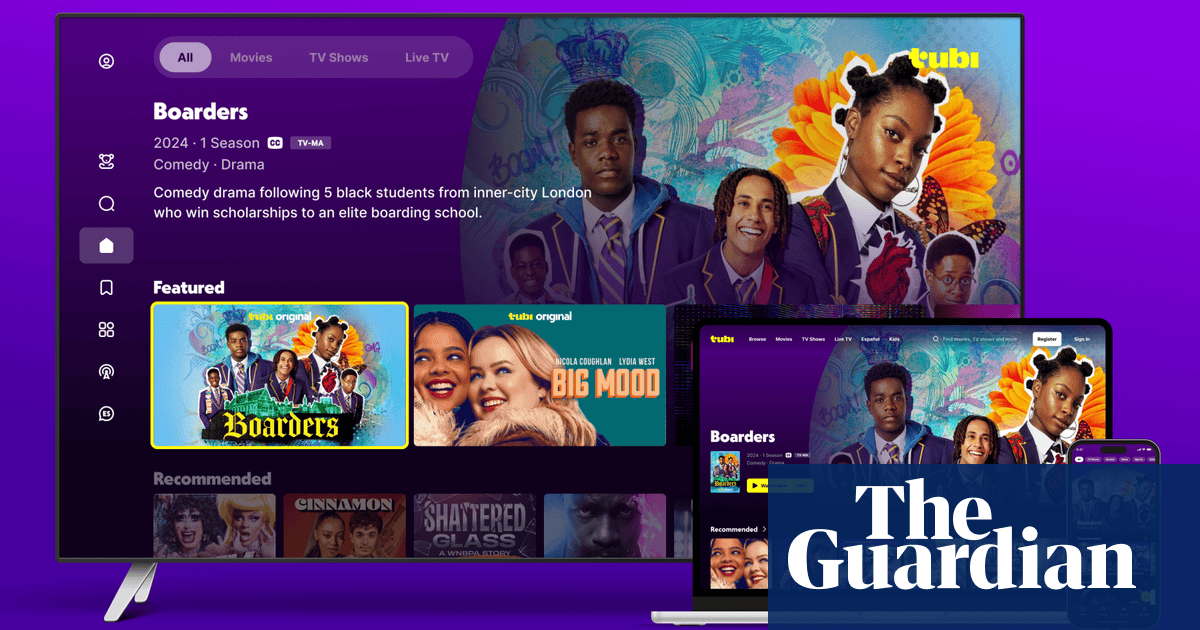Thereâs a reason so many websites dedicate reams of virtual pages to the question of whether a brand-new movie is on Netflix, and when it might turn up there. For many casual viewers, the biggest streaming site is more or less synonymous with streaming itself; even big brand names like Disney+, no-longer-HBO Max, Peacock and Paramount+ are basically playing for second place. But at some point, they might need to concede that itâs really a battle for third at best: last month, all of those aforementioned glossy non-Netflix services were out-viewed by Tubi.
While fancier streaming services like Netflix and Prime Video have been experimenting with ad-supported versions in order to juice revenues (whether from cheaper ad-bearing subscriptions, hoping customers will pay more to avoid ads, or money from the ads themselves), Tubi offers a rotating, ad-supported lineup of movies and TV shows at the unbeatable price of zip. Itâs a free service that doesnât require so much as a sign-in. (I know this firsthand: Iâve been a regular Tubi user for years, and have yet to create an actual account.) Tubi combines the excited browsing of the old video store experience, the instant-gratification appeal of Netflix, and the old-fashioned channel-flipping of cable, where everyone once accepted the built-in ad breaks that came with movie-watching. Apparently, viewers donât mind introducing a little retro into their streaming experiences; Tubi is still growing in viewership and ad revenue. In its most recent quarter, the latter was up by 22%. (According to the CEO, the service isnât yet making money, but growth in such a competitive and capricious industry is still notable.)
Even before these numbers were posted, Tubi was no longer a scrappy upstart; the Fox Corporation â the part of the media conglomerate that wasnât sold off to Disney, and owns various Fox-branded TV stations â bought the service in 2020. Its essential approach, however, seems to be more or less the same: offer viewers a huge range of ad-supported choices â sometimes even programming that might appear on other, tonier-looking streaming services recently or simultaneously â without pouring nearly so much money into subscriber-baiting marquee originals. Thereâs actually plenty of Tubi original programming, but that, too, has a retro feel; itâs more what youâd expect from straight-to-cable or direct-to-video exploitation movies in the 90s or early 2000s than, say, HBO. The company is starting to experiment with starrier, higher-profile originals, including a new series starring TV mainstay Lauren Graham, but they seem unlikely to overtake its virtual video store appeal.
Indeed, a possible secret weapon sometimes unacknowledged in descriptions of Tubiâs rise is the fact that it has tons of movies that are over 30 years old, a relative rarity in many paid streaming services. At the moment, Netflix has two dozen or so pre-1990 movies â and that represents an uptick from some recent months, thanks to their recent anniversary-year initiative that saw them promoting groups of movies from 1974 and 1984. Max does a bit better on average, thanks to their ownership of Turner Classic Movies â but thereâs nowhere near the level of depth or variety as there is on the actual TCM (or its terrific cable-subscriber-only streaming app). For other services, a telltale sign can be to look up a genre thatâs less prevalent today, like westerns or musicals, and see what they offer. Peacock, for example, has one pre-1990 musical; among Tubiâs choices in this department are the original West Side Story, Seven Brides for Seven Brothers, Royal Wedding, The Pajama Game, The Jazz Singer, Fiddler on the Roof, Yentl, The Music Man and High Society. Itâs not everything you need to know about the genre, surely, but itâs a better start than many more expensive services can provide.
This makes Tubi sound like the choice for older folks looking to supplement their MeTV viewing as a means of peering into the past. Yet according to the company, Tubi also has the youngest median age viewership in TV at 39. That âTVâ designation probably eliminates some magnets for the youngest media consumers, like TikTok or YouTube, but Tubiâs CEO, Anjali Sud, stressed in a recent interview that the company does have its eye on younger viewers, and considers the company in competition with major alternatives to traditional movies and television, rather than a futuristic version of a particularly well-stocked cable channel.
Though itâs probably difficult to outstrip YouTubeâs reach (and its creatorsâ endless supply of grasping, algorithm-sharpened thumbnails), the two services make for striking competitors, at least for now. Though you can rent movies and shows through YouTube, the platform has exploded thanks to sui generis content and its creators, who arenât always steeped in anything more than other YouTube videos and/or the shifting whims of the algorithm that serves them up. This material may variously connect to sketch comedy, talkshows, reality TV, visual essays or animated shorts, among many others, but much of it has its own parameters and genres that can often seem, to outsiders, insulated from history. Tubi, on the other hand, can offer a surprisingly decent crash course in classic cinema, if youâre willing to sit through a few ad breaks (which, again, almost anyone raised on cable TV in the 80s, 90s, and 00s was). Even in months where their specific âclassicsâ section might wane (or the transfers of certain public-domain titles might not be the most pristine), thereâs an eclecticism that expands beyond the very recent past and actually rewards curiosity on a tight budget. If streaming is going to rot our brains and keep us indoors, the least it can do is offer a little breadth.
That may not be the long-term gameplan, just as Netflix gradually shrank its endless DVD library into a far more finite series of conveniences. In that same interview with the Verge, Sud talks about investing in content creation â not necessarily on a Netflix level, but courting younger voices who might otherwise consider making stuff for the likes of TikTok. On some level, this seems like a potential misread of what their audience is and how to court it, like hiring a juggling clown to perform at a local video store. But if Tubi keeps its large and rotating selection of free movies and shows alongside the less experienced content creators, perhaps it can create a more natural flow between TikTok-style insta-culture and entertainment made by, you know, actual professionals â something that actually capitalizes on the promise of a converged, omnivorous internet. (And maybe the âcontent creatorsâ can simply replace the shlocky knock-off portion of the Tubi catalog, which is substantial, and probably gooses their selection numbers substantially with the kind of mockbusters and animated Disney imitators you used to find on sale at the drugstore.)
Maybe thatâs a pipe dream of middle age â that somehow, culture will pivot back to a richer sense of history that actually and playfully draws connections between entertainment from different eras. But right now, the brand thatâs shorthand for streaming treats theatrical releases with hostility, is tightening the purse strings on their auteur-driven projects, and surfaces shows that seem increasingly unmoored from the craft of making TV. Netflix accidentally created a new, worse kind of monoculture, where choices are few and voracious and unsatisfying binges are encouraged. Imagine a future where instead, we Tubi and chill.

